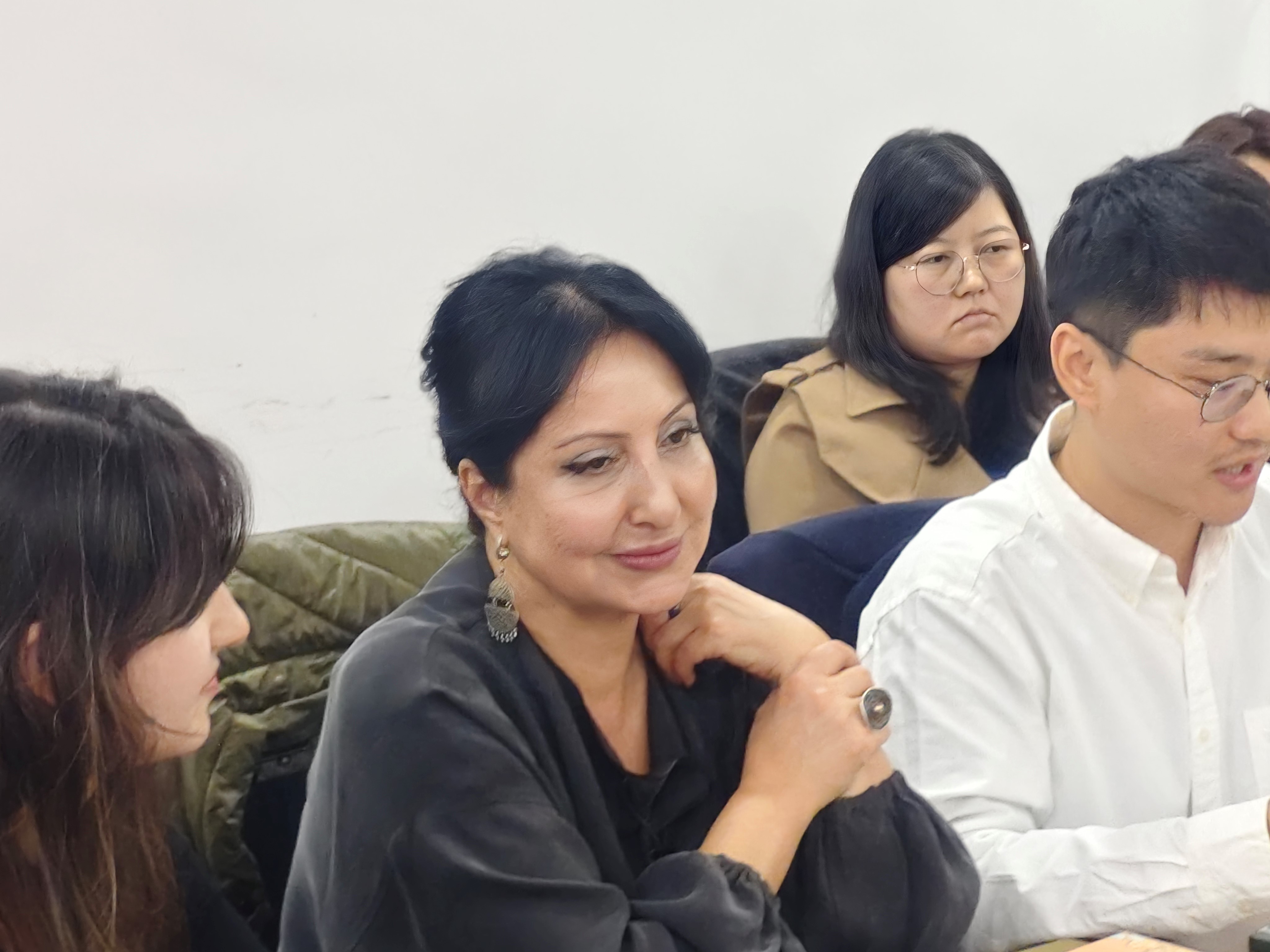
The 65th session of the “Adventus Amicorum” seminar series, organized by the Institute of Area Studies Peking University (PKUIAS), took place on October 15, 2025. The seminar’s theme was “The Ethnopolitical Features of the Ottoman Empire.” Lusine Sahakyan, an associate professor from the Department of Turkic Studies, Faculty of Oriental Studies, Yerevan State University, delivered the keynote lecture. The lecture was moderated by Zan Tao, a professor at the Department of History at PKU and PKUIAS deputy director. Participants in the discussion included Prof. Seda Gasparyan, head of Yerevan State University’s English Philology Department and Honorary Scientist of the Republic of Armenia; Associate Professor Zhou Sicheng from the Department of History at Tsinghua University; and Associate Professor Shi Yue from the School of Foreign Languages at PKU.
At the beginning of the session, Zan Tao introduced the work of the Institute of Area Studies and Prof. Sahakyan’s academic background, extending a warm welcome to Prof. Sahakyan on behalf of the Institute.
Prof. Sahakyan began by outlining the basic situation of the Ottoman Empire in the 16th century, including its fundamental geographical units and the numerous ethnic groups within its territories. She pointed out that, facing a Christian majority, the Empire’s crucial task was to integrate these groups into its system. Measures included continuously reforming the administrative division system, having Sufi orders proselytize in newly occupied territories, altering the demographic composition in pagan areas through population transfers, and registering properties in newly conquered lands for taxation purposes. She also outlined the administrative hierarchy of the Ottoman Empire.
Prof. Sahakyan noted that, beginning in 1465, when Western Armenia was incorporated into the Ottoman Empire, the imperial government conducted large-scale land and property registrations. Similar measures were adopted when the Iranian Safavid dynasty occupied the area. These registrations aimed to understand the local population structure and land properties for tax purposes. Conducting these registrations in the eastern Armenian regions of the Ottoman Empire proved relatively difficult and required reliance on newly converted groups for information. Officials compiled registration and tax assessment records, which were then sent to the Sultan’s court for the tughra before implementation. Furthermore, the devşirme system was implemented, primarily conscripting Christian boys from the empire’s frontier regions to serve in the imperial court and army. The exploitative nature of the imperial tax collection drove many Armenians to flee, becoming what were referred to as “mountain bandits.” In essence, such land registrations were carried out throughout almost the entire empire.
Prof. Sahakyan presented the Ottoman Empire’s taxation system, highlighting its significant impact on ethno-religious politics. Non-Muslims were subject to a poll tax (jizya) and numerous customary taxes. Historical records indicate that in Western Armenia, the actual taxes levied on the wealthy could even reach ten times the legally stipulated amount. Moreover, Armenians were required to pay taxes both to the Armenian Church and the imperial government. Due to an inability to afford these taxes, many Christians falsely claimed to be Muslims through bribery, resulting in inaccuracies in the empire’s religious population registrations. The Ottoman Empire consistently managed ethnic groups based on religious affiliation, which later became institutionalized as the millet system. Each religious millet was responsible for taxation, marital affairs, civil litigation, and other matters. Non-Muslims were subjected to discriminatory policies restricting housing and clothing. Prof. Sahakyan added that the devşirme system imposed severe oppression on Armenian families—even children’s travel expenses had to be paid by their parents. Many Armenian children joined the artillery units of the empire’s Janissaries (yeniçeri). The Janissaries lacked formal military discipline and were primarily maintained through wealth.
Prof. Sahakyan also noted that guild organizations facilitated commercial activities. Many Armenians converted to Catholicism after joining guilds and later embraced Islam, resulting in the emergence of Armenian-speaking Muslims. Furthermore, in modern times, there were instances of forced conversion of Armenians and other non-Muslims. The Ottoman Empire also sought to promote linguistic assimilation among non-Muslims, such as Armenians, by Turkifying a large number of place names and attributing Turkish etymologies to them. This policy was vigorously enforced during the Young Turks period. Finally, Prof. Sahakyan provided an overview of Ottoman-Turkish studies in Armenia, explaining the origins of the Neo-Ottomanist ideology from a historical perspective.

During the discussion section, Zan Tao pointed out that Prof. Sahakyan’s research reflected trends in international academia and presented an Armenian perspective, which challenged the long-standing “Turkocentric” tendency in Ottoman historiography, carrying both academic and practical significance. Zhou Sicheng noted that while there were similarities in the ruling techniques of the Mongol Empire and the Ottoman Empire, the Mongols’ preferential policies toward specific religious groups were quite different from those of the latter; the ethnic policies of the Mongol Empire shared more similarities with those of classical empires and colonial empires than with the Ottoman Empire, possibly because the former lacked a religious core unlike the latter. Shi Yue raised questions regarding the terms used in the Armenian language and historical sources for the Ottoman Empire and Turkic peoples, as well as whether Armenian academia paid attention to Central Asia. In response, Prof. Sahakyan stated that before the 19th century, Armenians referred to the Ottoman Empire as “Tachkastan”; “Ottomanism,” “Islamism,” and “Pan-Turkism” were interconnected; Armenian Turkic studies initially focused more on the Ottomans and Turkey, but after the country’s independence, the scope of research expanded to include modern Turkic speaking peoples; within Armenian academic discourse, a clear distinction is made between Turkish speakers in the Ottoman Empire and Turkic-speaking groups in other regions.


